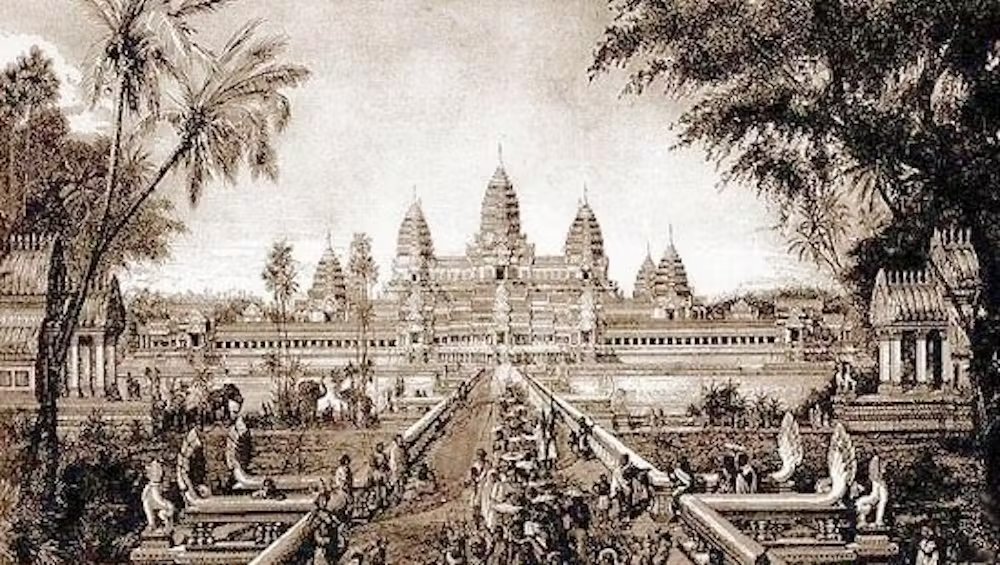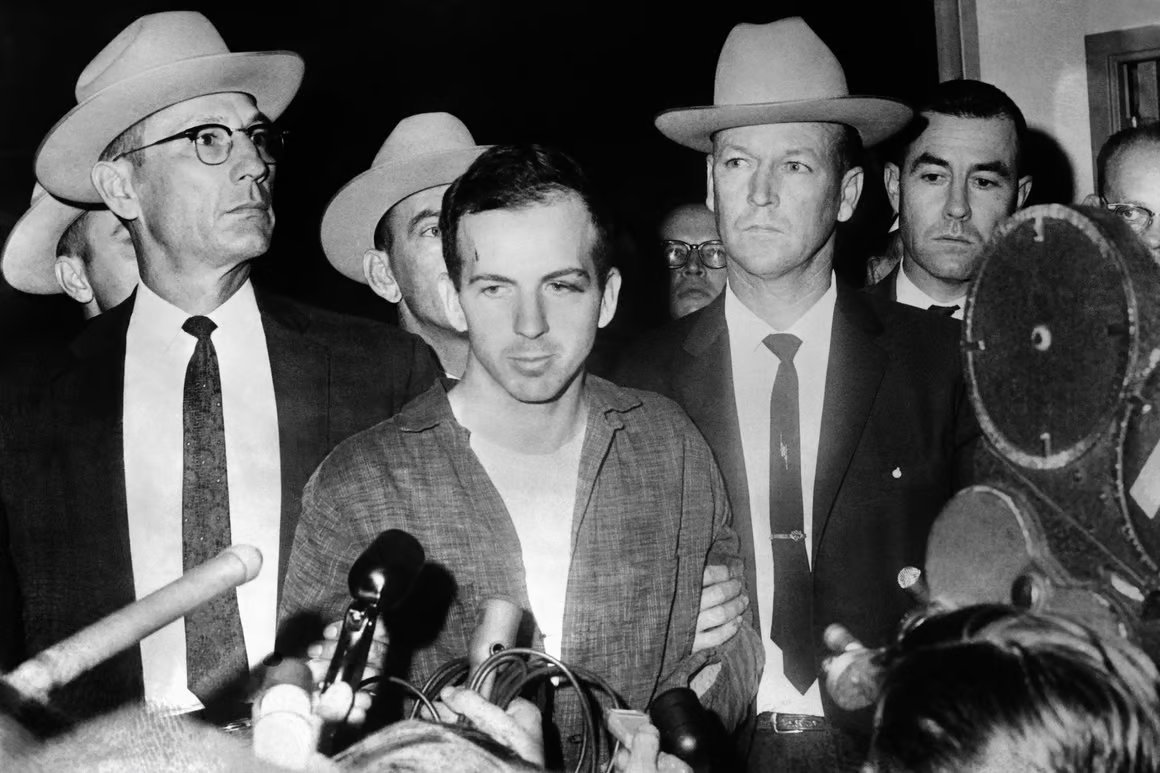In 1860, a French explorer hacked through the Cambodian jungle and uncovered Angkor Wat.
A city larger than medieval London, built by god-kings and powered by advanced engineering.
Yet within a century, it was abandoned to the wild.
Here's the untold story:
A city larger than medieval London, built by god-kings and powered by advanced engineering.
Yet within a century, it was abandoned to the wild.
Here's the untold story:

Mouhot was astonished by the sheer scale of what he uncovered.
Angkor Wat, a 900-year-old religious complex, is the largest religious monument in the world.
Its intricately carved stone reliefs, vast corridors, and lotus-shaped towers rivals the great cathedrals of Europe.
Angkor Wat, a 900-year-old religious complex, is the largest religious monument in the world.
Its intricately carved stone reliefs, vast corridors, and lotus-shaped towers rivals the great cathedrals of Europe.
But this was only the beginning.
Radar imaging and modern archaeology have revealed that Angkor Wat was part of Angkor Thom, a metropolis as large as modern-day London.
Radar imaging and modern archaeology have revealed that Angkor Wat was part of Angkor Thom, a metropolis as large as modern-day London.
Between the 9th and 15th centuries, the Khmer Empire ruled over much of Southeast Asia, with Angkor as its capital.
At its height, the empire stretched from Vietnam to Laos and across Thailand.
Angkor was a bustling metropolis home to possibly over a million people when London housed just 30,000.
At its height, the empire stretched from Vietnam to Laos and across Thailand.
Angkor was a bustling metropolis home to possibly over a million people when London housed just 30,000.
Angkor was a spiritual, economic, and cultural powerhouse.
The city was meticulously planned, featuring:
1. A vast grid of roads and canals to connect its temples and villages.
The city was meticulously planned, featuring:
1. A vast grid of roads and canals to connect its temples and villages.

2. Sophisticated water management systems to irrigate rice fields, which fed its massive population.
3. Magnificent temples, each built by a king as their mausoleum and modeled after Mount Meru, the mythical home of the Hindu gods.
3. Magnificent temples, each built by a king as their mausoleum and modeled after Mount Meru, the mythical home of the Hindu gods.

At the heart of the Khmer Empire was the belief that their kings were deities.
The construction of Angkor Wat, commissioned by King Suryavarman II in the 12th century, symbolized divine authority and power.
Its design reflected cosmic order, with moats representing the oceans and towers symbolizing the peaks of Mount Meru.
The construction of Angkor Wat, commissioned by King Suryavarman II in the 12th century, symbolized divine authority and power.
Its design reflected cosmic order, with moats representing the oceans and towers symbolizing the peaks of Mount Meru.
Jayavarman VII, known as the "Great Builder King," expanded the empire’s reach and oversaw the construction of hundreds of temples and infrastructure projects.
His works included Angkor Thom and the Bayon Temple, adorned with massive stone faces.
His works included Angkor Thom and the Bayon Temple, adorned with massive stone faces.
In Cambodia’s harsh climate, water was both a blessing and a curse.
The Khmer devised an intricate network of reservoirs, canals, and dikes to store and distribute water throughout the year.
The Khmer devised an intricate network of reservoirs, canals, and dikes to store and distribute water throughout the year.

These systems allowed them to grow rice on a massive scale, feeding their population and generating wealth for trade.
Modern studies reveal that this water management system was among the most sophisticated in the ancient world, rivaling the Dutch mastery of canals centuries later.
Modern studies reveal that this water management system was among the most sophisticated in the ancient world, rivaling the Dutch mastery of canals centuries later.
Despite its brilliance, Angkor was abandoned by the 15th century, left to be reclaimed by the jungle.
1. The Thai kingdom of Siam frequently waged war against the Khmer, sacking Angkor in 1431 and carrying off its treasures and people.
2. The empire’s resources were drained by continuous building projects and wars.
1. The Thai kingdom of Siam frequently waged war against the Khmer, sacking Angkor in 1431 and carrying off its treasures and people.
2. The empire’s resources were drained by continuous building projects and wars.
3. The Khmer's reliance on an elaborate water system made them vulnerable.
4. Deforestation and sediment buildup likely caused their canals to fail, leading to agricultural collapse.
5. With the rise of Theravada Buddhism, the divine status of the kings diminished, weakening the central authority that held the empire together.
4. Deforestation and sediment buildup likely caused their canals to fail, leading to agricultural collapse.
5. With the rise of Theravada Buddhism, the divine status of the kings diminished, weakening the central authority that held the empire together.
For centuries, Angkor remained hidden in the jungle, its grandeur forgotten by the world.
Mouhot’s discovery in 1860 sparked global fascination.
Explorers, archaeologists, and historians descended upon Cambodia to uncover its secrets.
Mouhot’s discovery in 1860 sparked global fascination.
Explorers, archaeologists, and historians descended upon Cambodia to uncover its secrets.

Modern technology has played a crucial role in piecing together the city’s history:
- Satellite and radar imaging have revealed the true scale of Angkor, including thousands of surrounding villages and hidden temples.
- Translations of ancient inscriptions have unraveled the empire’s political, religious, and social systems.
- Satellite and radar imaging have revealed the true scale of Angkor, including thousands of surrounding villages and hidden temples.
- Translations of ancient inscriptions have unraveled the empire’s political, religious, and social systems.

Now a UNESCO World Heritage Site, Angkor Wat is a symbol of Cambodia’s heritage and resilience.
Archaeologists continue to make discoveries, shedding light on the lives of the Khmer people and their awe-inspiring achievements.
Archaeologists continue to make discoveries, shedding light on the lives of the Khmer people and their awe-inspiring achievements.

Get more historical data, documentaries and stories directly in your email every week:
historynerd.beehiiv.com/subscribe
historynerd.beehiiv.com/subscribe
• • •
Missing some Tweet in this thread? You can try to
force a refresh














